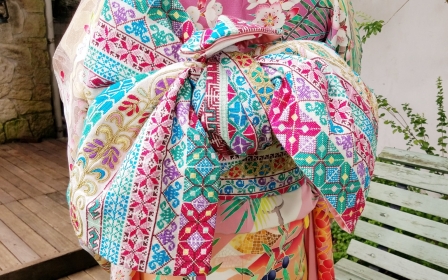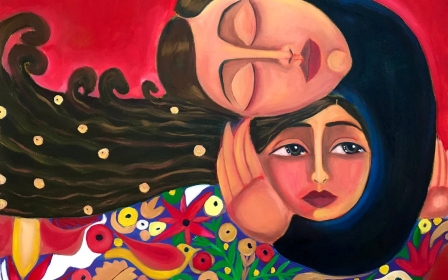
A South Korean artist in Qatar: Kim Sinae on changing perceptions of the Middle East
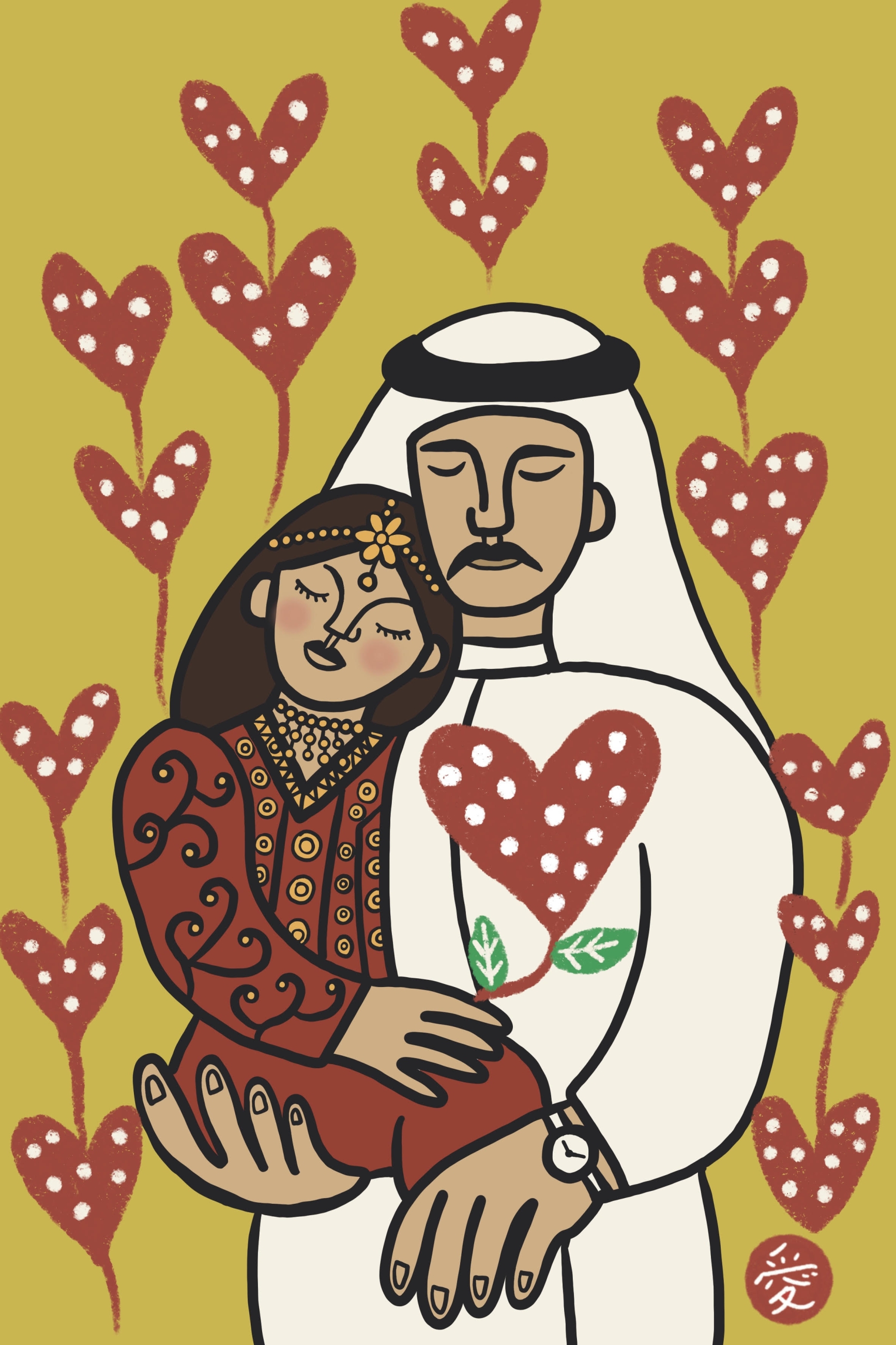
Kim Sinae says that before she moved to Qatar for work, the only images she saw of the Middle East were political or economic. “It was mainly terrorism, war, religious conflict, or about oil money and women,” she told Middle East Eye. However, living in the Gulf state was an eye-opening experience, in terms of her perceptions of the region.
The South Korean took up digital art during the Covid-19 pandemic and focused on showcasing the beauty and diversity of Middle Eastern culture, spending hours researching each country’s culture before starting a painting.
Her art, which she shares on Instagram, depicts everyday life in the Middle East, including family dynamics and romantic relationships, as well as the plight of the Palestinian people. “The reason art is a great tool is that it can communicate and transcend nationality, language and religion,” she says.
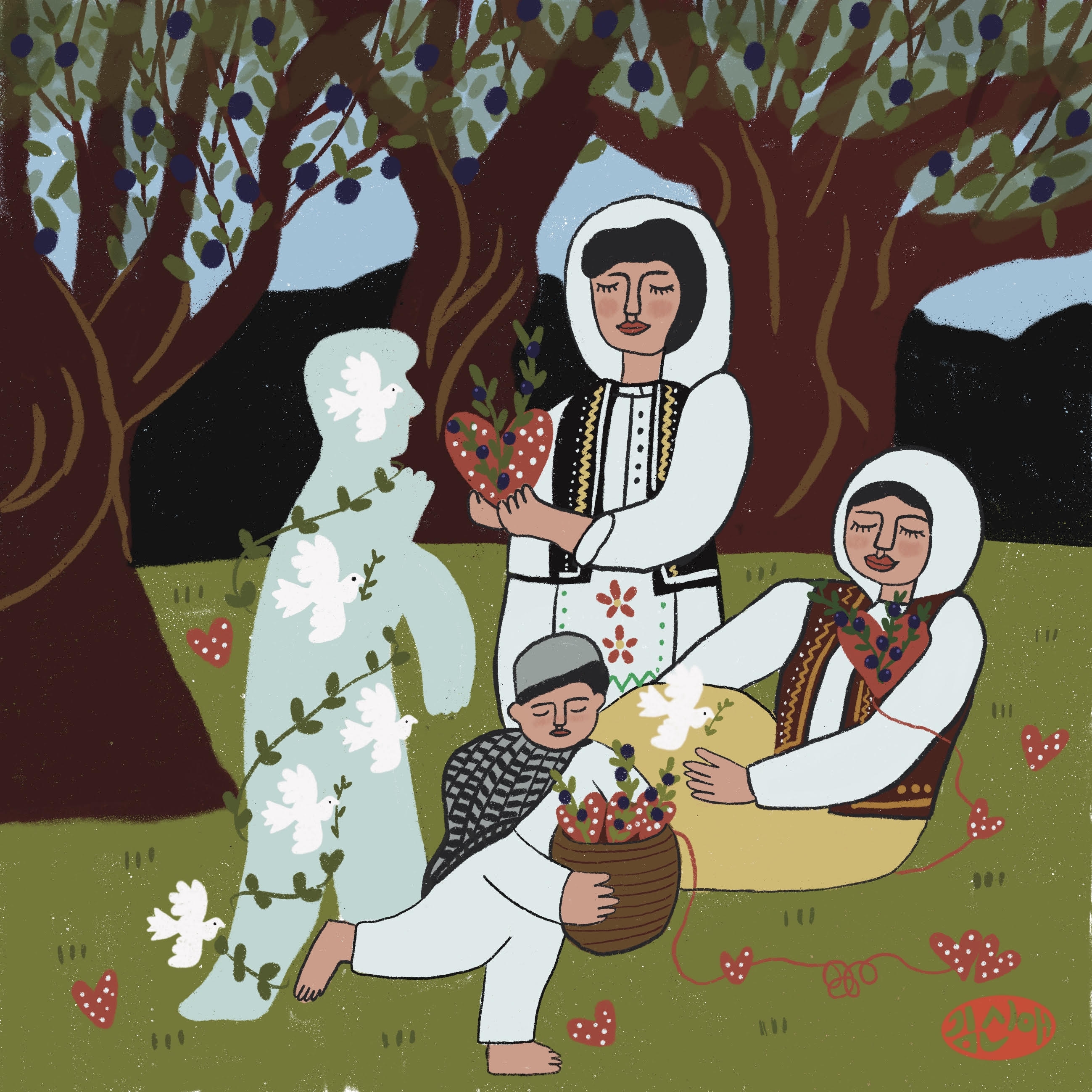
Sinae consults her Instagram followers for information about their countries, which informs her illustrations. Her work has depicted scenes from across the Middle East, from countries such as Yemen, Saudi Arabia, Libya and Palestine. Her inspiration also stems from her Korean background, and the artist says her upbringing has significantly influenced her work. “Korea has had to overcome a lot of adversity and disaster, and has now developed harmony and democracy. There is also the idea from our ancestors of hongik, which is to benefit humans," she says.
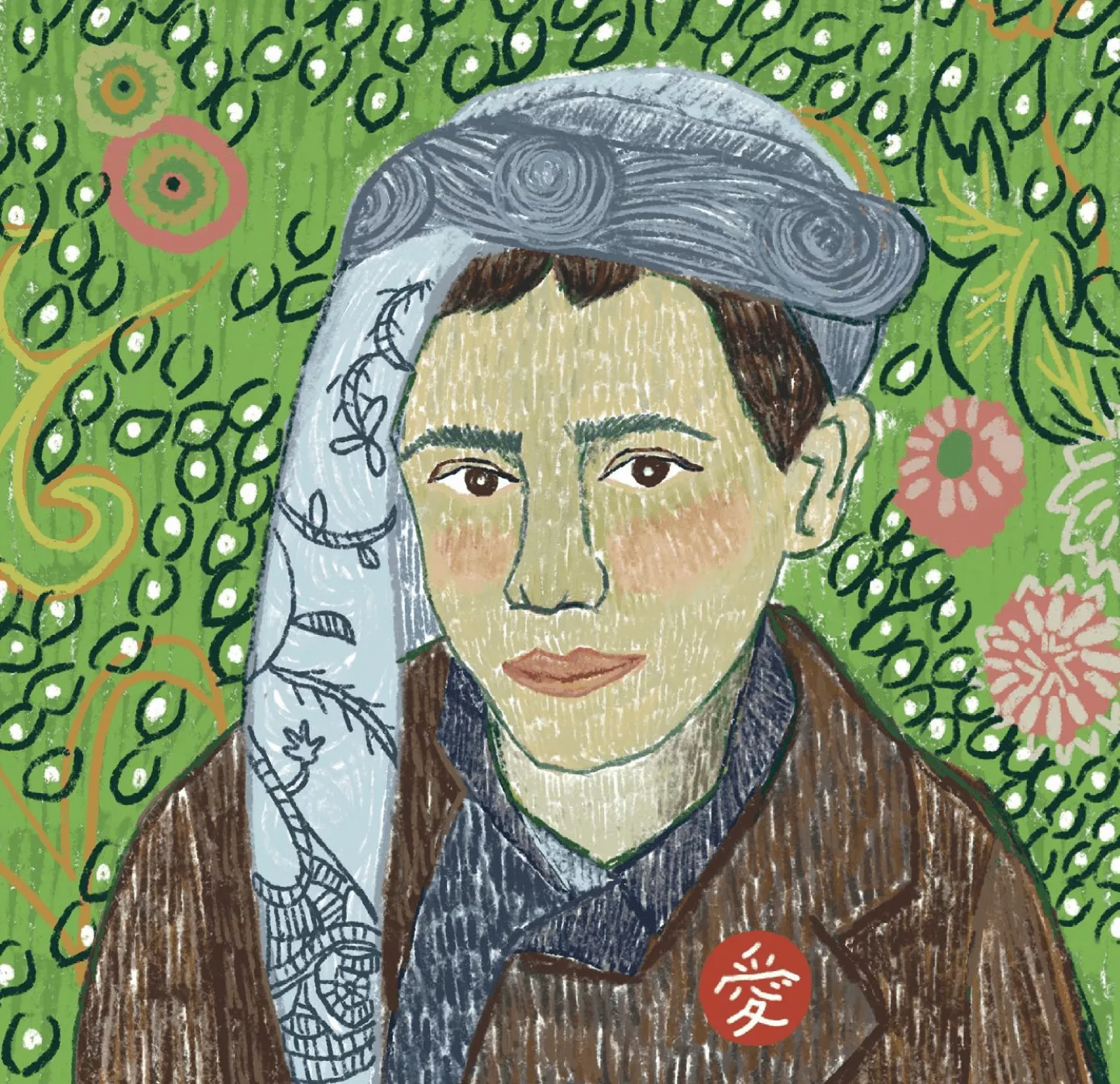
Malak Altaeb, a Libyan researcher and blogger who focuses on different art forms in Libya, says Sinae’s attention to detail caught her eye. “I discovered Kim’s artwork through Instagram, where I mainly use it to find new artists from the region. She had a piece showing the traditional Libyan attire... I was amazed by the accuracy of the details,” she told Middle East Eye.
One of the most striking aspects of Sinae’s work, according to Altaeb, is her inclusivity. “She managed through her work to cover the MENA region as a whole, not only focusing on specific countries,” she said.
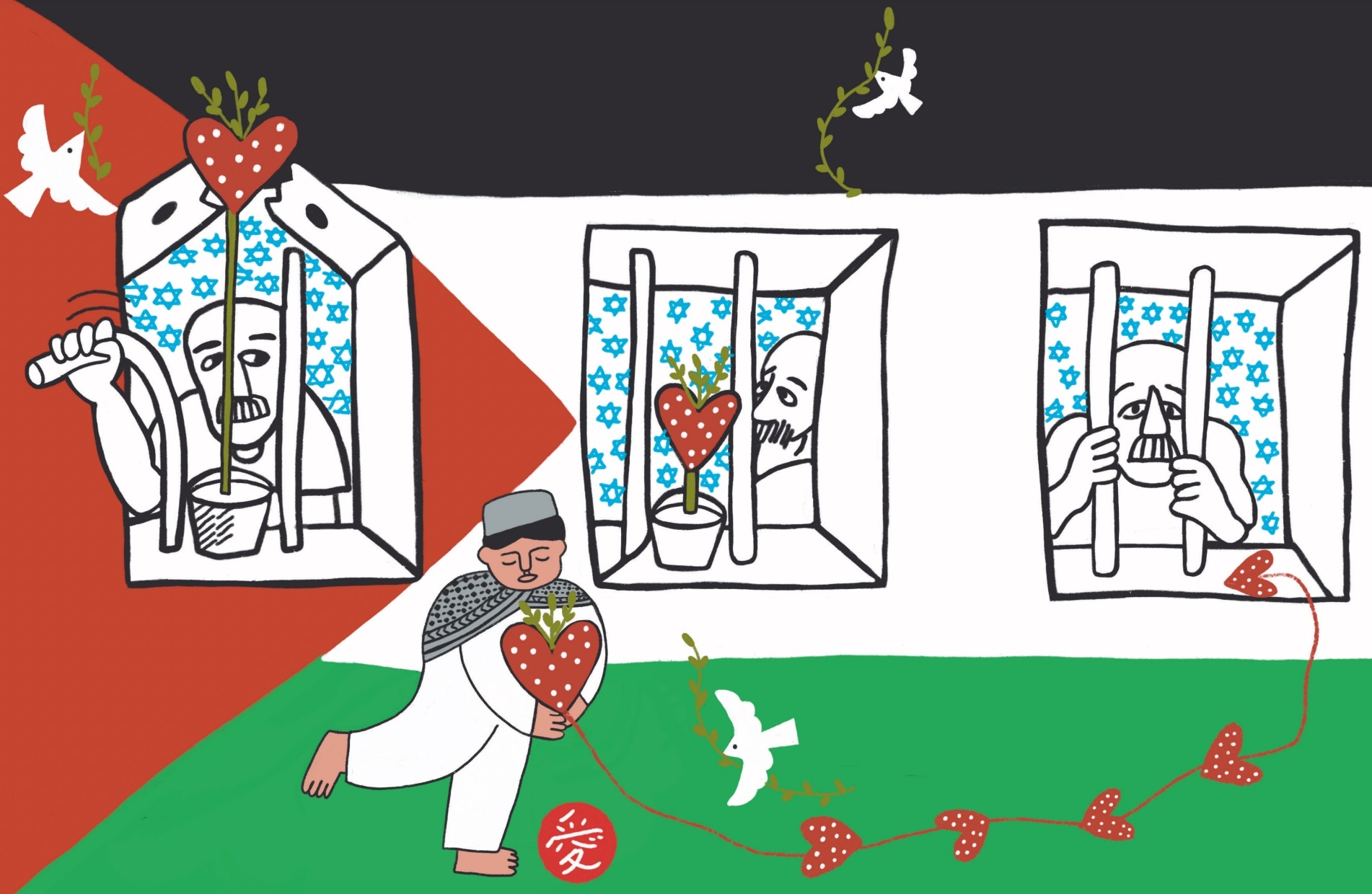
Some of Sinae’s most widely praised illustrations relate to the culture of Palestinians and their struggle for freedom. In one illustration, Sinae pays homage to Palestinian cartoonist Naji al-Ali, who is renowned for his "Handala" cartoon of a 10-year-old boy with his back turned and hands handcuffed. The artist famously stated that the face of the character would only be revealed when Palestine is free from Israeli occupation.
Sinae’s illustration depicts Palestinians behind bars in an Israeli prison, as well as Palestinian women during olive-picking season. Her art is loaded with symbolism, displaying motifs such as Jerusalem's al-Aqsa mosque, one of the most revered and holiest sites in Islam, as well as doves and olive branches.
“My drawings on Palestine were to express their basic need for freedom and rights, and their desire to live on their own land,” she explained. “I think a person’s home is their basic right, for their mental and physical safety.”
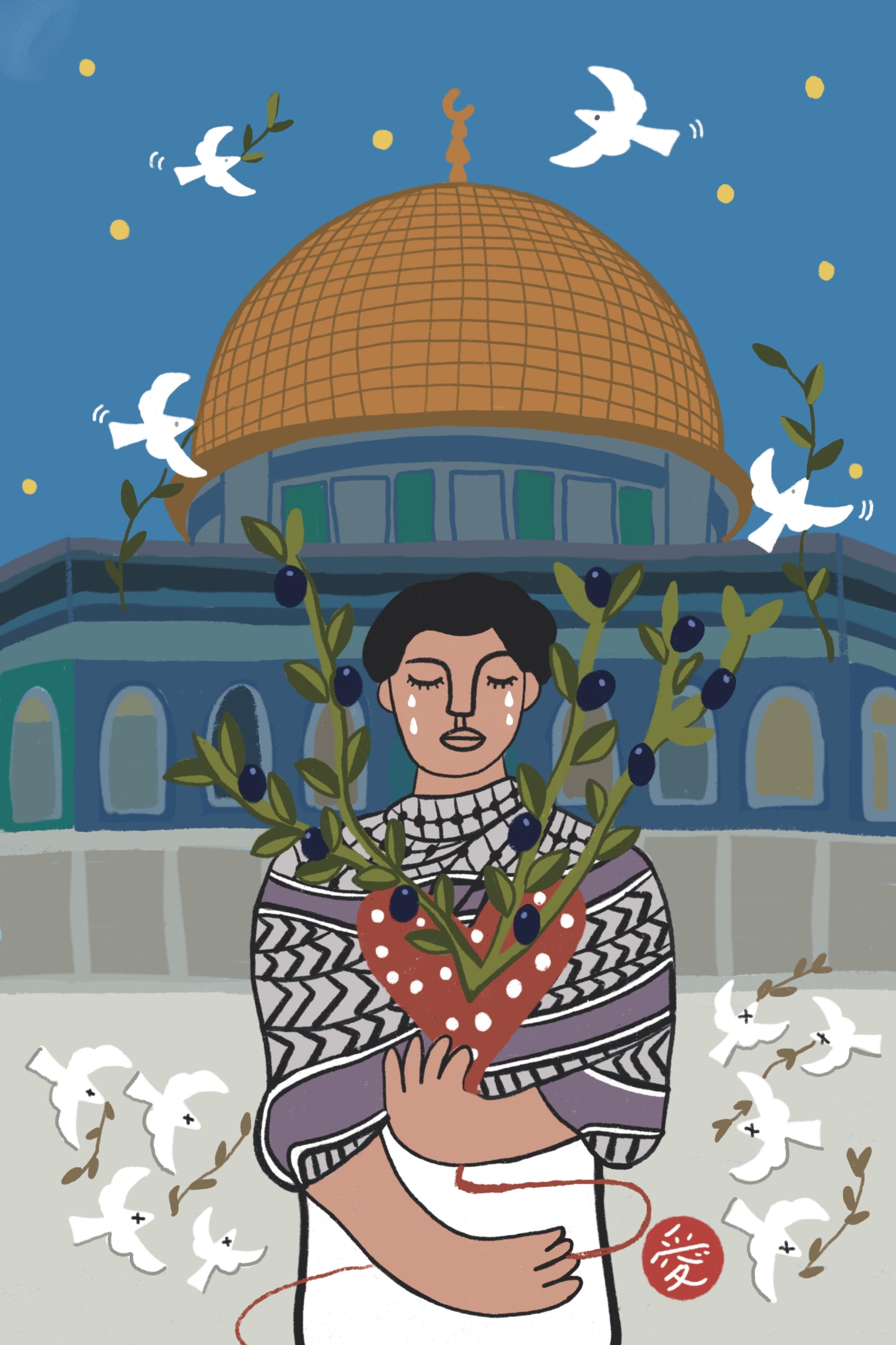
The artist says that despite not being aware of all the intricacies and complexities of what is happening between the Israelis and Palestinians, she wants to shed light on the rich culture of Palestine. “I hope that people will not forget about Palestine and that we can preserve their beautiful culture. If I can help with my art, I will always participate in that.”

Sinae says she also wants to actively combat negative depictions of the Middle East by producing works that contradict "derogatory" narratives. “I wanted to only focus on the positive aspects of Middle Eastern culture, because there are already so many negative depictions in the media. I want to be an artist that draws happiness and love.”
One notable series of illustrations, a re-imagining of the Austrian artist Gustav Klimt's The Kiss, depicts a couple in different types of Middle Eastern and North African clothing, holding one another in an embrace.
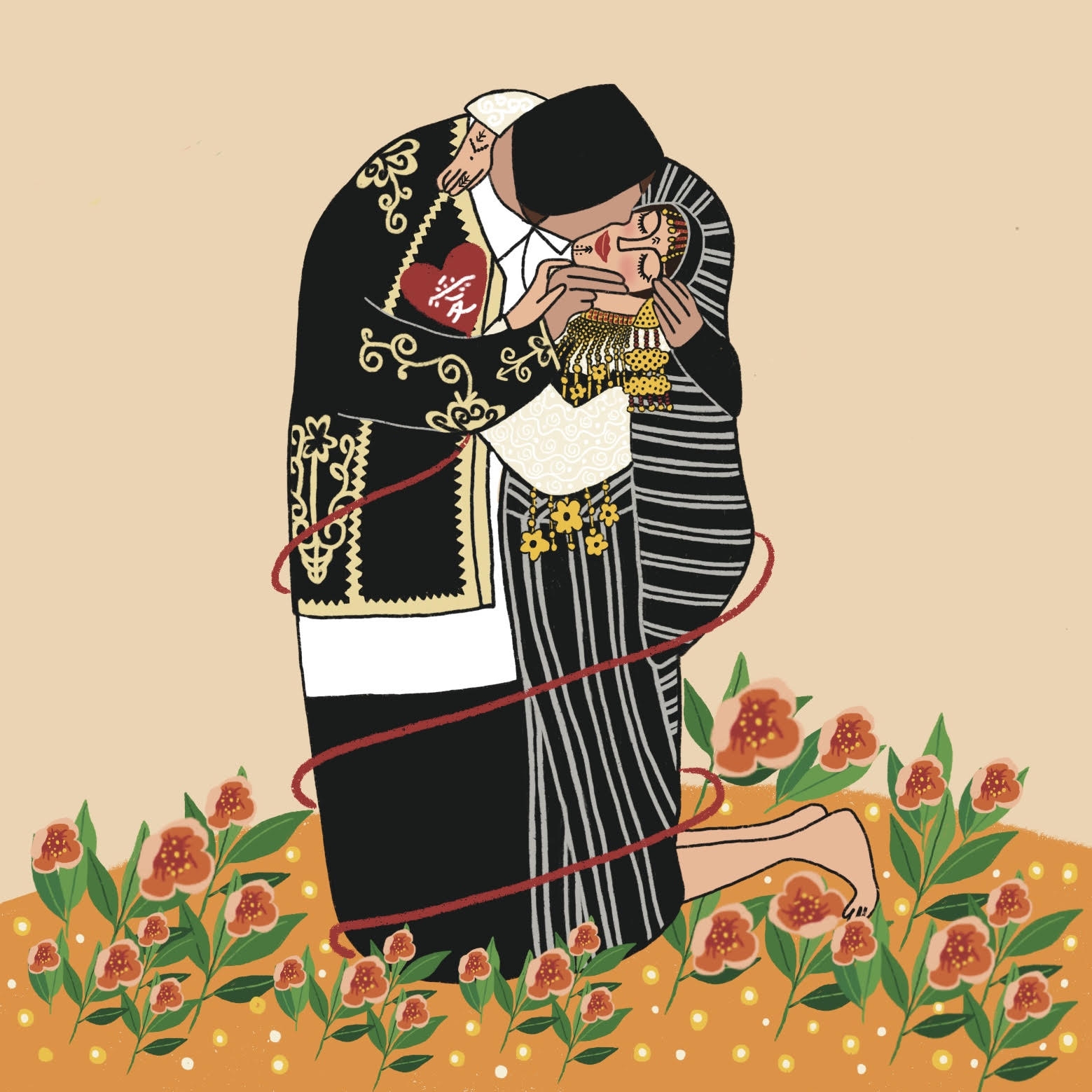
A North African version of Gustav Klimt's The Kiss by Kim Sinae. “Many people think that traditional clothes from Arab countries are simple, but in fact there are many types of diverse and beautiful clothing styles," she says.

Sinae says she has received a lot of positive feedback from her followers, many of whom have thanked her for the way she showcases Middle Eastern culture. Although Sinae says she often struggles to find the time to balance her creative work with a full-time job, her dream is to become a cultural artist. “My goal is to be a person who can share and motivate many people and express the culture of the Middle East well,” she says.
Middle East Eye delivers independent and unrivalled coverage and analysis of the Middle East, North Africa and beyond. To learn more about republishing this content and the associated fees, please fill out this form. More about MEE can be found here.


